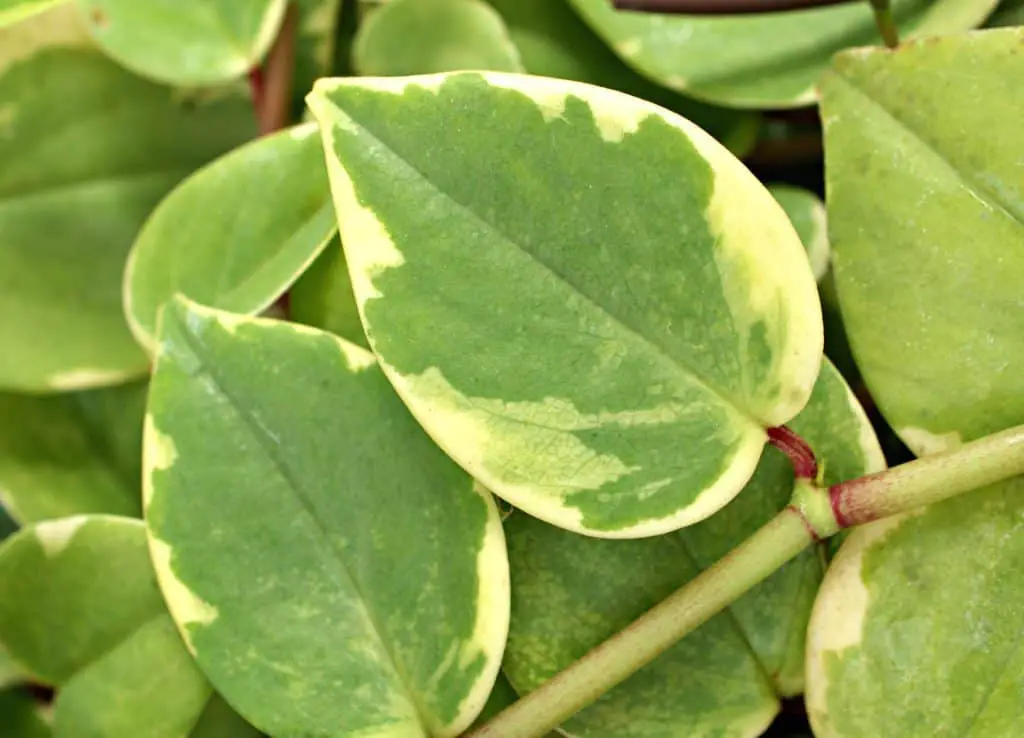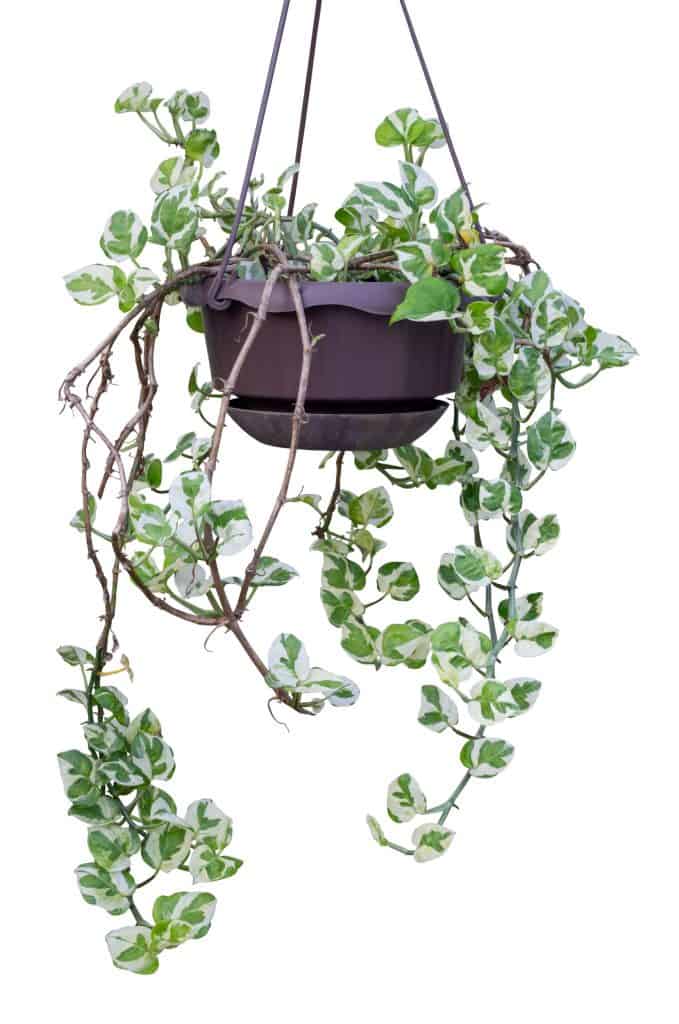Cupid Peperomia is a gorgeous, rare species of Piperaceae plant native to Mexico, and some parts of the Americas. It is most well-known for its heart shaped leaves, and cascading, almost vine-like structure. The leaves are colored a happy green with cream edges. Peperomia plants are said to purify the air around them, and bring luck to the owner. Cupid Peperomia is considered a species of Rubber plant, because of its succulent-textured leaves. If you’re looking for a pretty house plant that brings you good energy, and is easy to grow, then Cupid Peperomia would be the perfect addition to your plant collection.
How to Care for Cupid Peperomia
Cupid Peperomia is a relatively easy house plant to grow. Plant your Cupid in a well-drained pot with an aerated potting mix. This plant likes a soil pH of 6 to 7 (mildly acidic to neutral). In addition, be sure that the potting mix has perlite or bark in it! This species of plant prefers to draw nutrients from the plants around it, rather than just the soil. In the wild, it grows near the shade of other plants. To simulate this, not only should you properly fertilize the soil for your plant, but you should also place it in the right spot.
Place your Cupid Peperomia in a bright place where it won’t get too much direct sunlight. Like most houseplants, direct sunlight for prolonged periods of time can burn the Cupid’s leaves. Cupid Peperomia can thrive in shady places, but be sure shady doesn’t turn into dark. If you’re a plant fanatic, and you have a tree-like house plant already, placing your Cupid next to it might be a good choice, in order to simulate that natural shade.
Now that your Cupid Peperomia has a nice home, let’s make sure it stays happy and healthy. For optimized growing, Cupid Peperomia should be watered only once or twice a week; further watering could cause damage to the plant. Cupid Peperomia, due to their succulent style leaves, retain a lot of water, and are drought resistant. With this plant, it is better to under-water than over-water.

Cupid peperomia, as stated before, has origins in Mexico, the Americas, and the Caribbeans. This means that this tropical plant likes a higher humidity. While this isn’t a huge deal, as Cupids have been documented to tolerate humidity levels around 40%, the optimal level of humidity for this plant is around 60%. In addition to this, keep your Cupid warm. They like temperatures between 60 and 80 degrees Fahrenheit. If Cupid peperomia is kept in temperatures below 50 degrees for long periods of time, the weather could cause damage to the plant, so it is important to ensure that it has a warm resting place for the winter.
If you live in a warm, humid area with non-harsh winters, you may be considering placing your Cupid outdoors. If so, it is important to note that the best hardiness zones for Cupid Peperomia plants are zones 10 and 11. Also recall, Cupids do not like too much direct sunlight. Place your Cupid near other, taller plants so it can have a natural shade. Overall, your Cupid will enjoy being next to other plants as long as its needs are met. Also be sure to adjust your watering schedule as needed.
Cupid Peperomia is quite a long lasting plant, so you shouldn’t have to worry too much about its longevity. There are a few things, however, that you can do to ensure your plant lasts a long time.
- Repotting! Cupids have shallow roots, but after a couple years you may need to repot your plant if you notice its grow has stunted, or if roots are poking out from the drainage holes.
- Feeding! During its growing season (spring and summer), feed your Peperomia some half diluted fertilizer to ensure it keeps on growing.
- Pruning! Before spring time, prune any dead, or weak leaves off of your Cupid. This plant can normally grow up to 40 inches! If you’d like to keep your plant a certain size, it is totally okay to cut some of it off, even if it’s healthy. Just be sure not to cut more than a quarter of a stem. Also be certain not to prune the thinner areas.
Cupid Peperomia Flowers
You can sometimes get some small, almost unnoticeable white flowers on your Cupid! But it is extremely rare, especially if being kept as a house plant. Keep your Cupid healthy by snipping these buds off. Pruning your Cupid is ultimately going to promote its growth, so it is better to do that plant a favor and snip those buds, as they take a lot of energy away from the plant.
Is Cupid Peperomia Toxic?
Cupid Peperomias are not toxic to humans or animals, which makes this houseplant a wonderful choice for parents who worry their younglings might get a hold of a leaf or two. However, this doesn’t necessarily make the plant edible, so it’s best to keep it out of curious hands, and paws too.

Common Problems Growing Cupid Peperomia
As with any plant, you should keep an eye on your Cupid, and listen to what it’s telling you. Paying attention to the leaves especially will give you good insight on how to best support your plant.
- Yellow/Bleached Leaves: If the leaves on your Cupid are yellow or bleached, this is most likely due to over exposure to the sun. This is easily fixable. Simply place the plant in a shadier location.
- Brown Spotted Leaves: Typically, this disease is caused by overwatering, or by pest infestation. Both these can be nasty things to fight. Typically, an overwatered plant can be saved if it is repotted with dry soil. As for the pests, repotting can help, but the best thing to do is treat the plant with an organic treatment like Neem oil, and cut off any infected leaves that the pests might be feeding on. Brown spots can also be a sign of fungus, which grows when the plant is too wet. Be sure not to mist your peperomia daily.
- Leaves turning black: The plant is being overwatered, or is unhappy with either the temperature, or humidity of its habitat. Experiment with what works best for your plant and be sure to only water it when the soil feels dry to the touch.
- Drooping plant: Soft or drooping leaves are a sign of under-watering. The good news is that this is easy to fix. Simply water the plant, and within 24 hours or less, it should start to look much better.
- Leaves falling off: Leaves falling off are a clear sign of unhappiness, but this unhappiness can have many causes. If leaves are shriveling up and dropping, the plant is too dry. If the leaves are simply just falling off as they are, or seem weak, this is a sign of overwatering.
- Leaves curling: The most common cause of curling leaves is under watering. Curling leaves are also a sign of pests, who hide on the underside of the leaf. Treat with neem oil and cut off any ill-looking leaves. Note that if the plant is in distress due to its temperature and humidity levels not being properly met, the leaves may also curl.
Propagation
There are two main ways to propagate your Cupid. It can be done by water, or soil.
Propagating Cupid Peperomia in Soil
Cut off a healthy vine with at least one node and one leaf. Plant the cutting in wet potting mix. Be sure the node is below the soil, and any leaves are above.
To quicken the process, soak the node in rooting hormone before planting.
Propagating Cupid Peperomia in Water
Cut off a healthy vine with at least one node and one leaf. Fill a clean, clear glass container with water and put the cutting inside. Be sure the node is submerged in the water. The leaves should be above the water. Change the water weekly, and add water throughout the week if the levels get below the node.
Conclusion
Due to its rareness, Cupid Peperomia is often priced higher than other species of Peperomia. That being said, some strands of variegated peperomia sell for as low as $8, so research to see which one works best for you.
